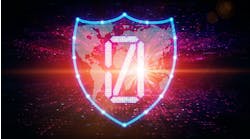In Today’s Multi-Functional Test Sets.
With the broad adoption of DSL and other bandwidth services in the paired copper network, many of today’s field technicians have highly sophisticated multi-functional tests that include a resistance bridge. Those of you who don’t have a multi-functional test set will at least have a standalone resistance bridge. A resistance bridge together with an understanding of the electronics theory behind it allows you to find most resistive faults that affect bandwidth.
You might wonder why you need to understand the electronics theory behind it. I promise you, it increases your efficiency and confidence considerably. Without knowledge of electronics theory, you may find the same faults that you would otherwise but you won’t do it quickly. Instead of doing what I call the divide-and-conquer method of fault locating where you cut the cable pair open, look at it, move on, and cut again to find the problem, you can practice a much more efficient process of electronic isolation.
This article is one to carry around with you because if you don’t have the newest equipment or some of your equipment doesn’t work, you can still be effective and efficient locating probably 80% of copper problems with one piece of equipment: a resistance bridge.
When using the resistance bridge feature on your test set, the distance to a resistance fault, such as a short, ground, cross, or battery-cross, is measured in ohms and then converted to an electrical equivalent based on the gauge, composition, and temperature, of the wire. You can then determine where the fault is along the cable route.
4 Examples of Using the Resistance Bridge
Example #1
The field technician attaches the resistance bridge at the customer’s terminal after strapping the good pair to a faulted ring ground conductor at the cross-connect box. Measuring with the resistance bridge set to 22 gauge at an accurate conductor temperature setting of 50 degrees, the resistance bridge shows a distance-to-strap (DTS) measurement of 6,750 feet, a distance-to-fault (DTF) measurement of 2,040 feet, and a strap-to-fault measurement of 4,710 feet.
Proceeding to a pedestal approximately at the 2,040 feet measurement and opening the pair, the fault shows to the field of the technician. The field technician could strap at the suspect terminal and measure again from the customer’s terminal for a closer strap-to-fault (STF) reading. Rather than do that, the strap is still in place at the cross-box. A simple distance-to-strap measurement can be compared to the first STF measurement for the approximate distance back to the fault. If the new distance-to-strap showed 4,500 feet, the field technician would know to go back the difference or 4,710 feet STF minus 4,500 feet DTS would show the fault 310 feet to the field toward the customer.
Many telephone companies still have multiple distribution plant where a cable pair will appear on more than 1 cable. This is referred to as a bridged tap or lateral. The cables are bridged together at a 3-way splice, and the cable pair appears at multiple terminals or pedestals. Understanding bridge theory can save countless hours of unnecessary work and unnecessary opening of cable pairs to determine where a fault is.
When using a resistance bridge, a measurement can be taken only from the test set to the strap. A fault on a lateral or bridge tap will appear to be in the 3-way splice where the lateral is connected because the test set cannot see down the lateral or bridge tap.
The trick to bridge theory when you are fault locating in multiple distribution plant is to watch the footage on the wire that is used twice. For example:
• If the resistance bridge is left at one place and the strap is moved from terminal to terminal, DTF is the footage to observe.
• If the strap is left in one place and the resistance bridge moved, STF is the footage to observe.
For lack of a better term, let’s call this measurement the Common Wire Reading (CWR). Following are 3 more examples.
Example #2: INCREASE IN CWR FOOTAGE
If a footage reading takes you to a suspect lateral, and the CWR footage increases, the problem is in that lateral, and the problem is down the lateral the difference between the 2 footage measurements. For example:
• DTF = 1,500 feet.
• Strapping the suspect lateral and re-measuring DTF =1,600 feet.
• The increase in footage shows the fault down the leg and the difference makes the fault 100 feet from the 3-way splice where the lateral breaks off.
Example #3: DECREASE IN CWR FOOTAGE
If a footage reading takes you to a suspect lateral, and the CWR footage decreases, the problem is beyond that lateral, and the problem is beyond the lateral the difference between the 2 footage measurements. For example:
• DTF = 1,500 feet.
• Strapping the suspect lateral and re-measuring DTF =1,400 feet.
• The decrease in footage shows the fault beyond the leg toward the first strap and the difference makes the fault 100 feet down the main cable toward the first strap from the 3-way splice where the lateral breaks off.
Example #4: CWR FOOTAGE STAYS THE SAME
If a footage reading takes you to a suspect lateral, and the CWR footage stays the same, the problem is in the 3-way splice or still on the common wire. For example:
• DTF = 1,500 feet.
• Strapping the suspect lateral and re-measuring showing DTF =1,500 feet.
• The footage did not increase. The fault is not down the leg. The footage did not decrease. The fault is not beyond the leg on the main cable toward the first strap. The fault is either in the 3-way splice or still back toward the test set.
To solve the problem, again use Example #2.
• Move the test set to the terminal where the first strap was placed. (BULLET) This time use STF, and look for the footage either stay the same or decrease.
• If the STF footage stays the same, the fault is in the 3-way splice.
• Any decrease would put the fault back toward where the test set was hooked up to begin with. The difference would indicate how far back from the 3-way the fault is located.
A thorough understanding of resistance bridge theory and strategies for locating faults can save countless hours in the field and eliminate opening splices to isolate cable faults and cut down the number of curiosity holes it takes to clear cable troubles. Your cost plus contractor won’t like the lost revenue, but your management team will like the cost savings.
Signing off
Thank you, as always, for reading my column. Tell me: what is it about your job that is keeping you awake at night? Let me know your toughest case, and we can explore solutions or learn how you solved the problem. Reach out to me at [email protected] or text or call 831.818.3930.





